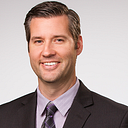Elon, truth and how we believe what we believe
How framing affects our beliefs, identity and decision-making
Let me tell you about a guy I know. He’s a very successful businessperson, but his life is a mess. He has been married and divorced multiple times, has eight children from three different women, and works obsessively, frequently spending 80–90 hours a week in the office. He got into trouble with the government at one point and was fined millions of dollars. He also got sued for claiming he invented technology for one of his companies and had to settle out of court.
This is not the narrative we hear about Elon Musk. The prevailing narrative is the genius entrepreneur who b̵o̵u̵g̵h̵t̵ ̵T̵w̵i̵t̵t̵e̵r̵ ̵t̵o̵ ̵r̵e̵s̵t̵o̵r̵e̵ ̵f̵r̵e̵e̵d̵o̵m̵ ̵o̵f̵ ̵s̵p̵e̵e̵c̵h̵ built Tesla to fight climate change and SpaceX to put humans on Mars, becoming the world’s richest man along the way.
Which version of Elon is correct — the brilliant innovator or the out-of-touch billionaire? What we choose to believe isn’t based on the information in front of us. It is based on how we frame the information in front of us.
Starting With The Self
Whether we recognize it or not, framing starts at the individual level, and we do it all the time. Ever disagree with a friend about a political event or argued with a work colleague about the meaning of a report? Then you’re engaging in framing, the process of bringing our biases, emotions and preconceived notions to view a set of information through a specific lens. It explains why different people can look at the same input and come to different conclusions. If you’ve ever yelled at a referee’s call (this one hits close to home) while someone rooting for the other team praises that same call, you’ve just witnessed framing.
The implications of framing are, well, everything. It not only affects the decisions we make, but it can change who we are. Our beliefs and our identity are self-reinforcing feedback loops. Since our beliefs are shaped by how we frame the world around us, framing can change our identity. Musk framed the world in terms of preventing human extinction, which led him to start companies to help humanity survive. His identity became synonymous with this and earned him a lot of fans.
But framing cuts both ways. Timothy McVeigh, convicted and executed Oklahoma City bomber, witnessed the 1993 siege against David Koresh’s Branch Davidian compound in Waco and framed it as the government’s assault on liberty. In response, he conducted a terrorist attack that killed 168 innocent people.
Growing into Groups and Organizations
The power of framing extends beyond individuals and into groups to shape collective identity. Politics has many examples to draw from. The January 6th hearings were watched by roughly 75% of Democrats but only 25% of Republicans, because one group frames the hearings as a detail of criminal wrongdoing, while the other sees them as a one-sided witch hunt.
Organizations also use framing to build an identity. Charles Duhigg gives a great example about Alcoa Steel in his book, “The Power of Habit.” When incoming CEO Paul O’Neill took over Alcoa in 1987, he decided to frame the company’s identity around safety. In his calculation, if they could significantly reduce the safety incidents, they could create a “keystone habit” that would lead to better employee morale and a culture of developing good habits, which would eventually show up in the company’s performance. It worked — when O’Neill left Alcoa in 2000, the company’s revenue had increased five-fold, and its market value had increased from $3 billion to $27 billion.
My company, Pariveda Solutions, frames client success in terms of employee growth. Our mission is to develop each person to their fullest potential. We use our consulting engagements as a platform for our people to express their talent and capabilities to benefit their clients and themselves. This framing has helped us develop a strong culture of learning and growth alongside our clients and partners.
3 Concepts to Consider when Framing
What is the result here? If we want to reach others and build connections, we have to stop thinking about decision-making in terms of our truth.
If we want to reach others and build connections, we have to stop thinking about decision-making in terms of our truth.
Instead, we have to think about how others frame the world around them. This thinking allows us to connect the dots between identity, decision-making and beliefs and opens the door to new ways of working with others to support different outcomes. Consider these three concepts when framing:
- Understand your own emotions and biases. Very few people practice the self-awareness needed to do this. Remember, a strong EQ can be more effective than a strong IQ.
- See the pictures in other people’s heads. It’s not enough to know your own biases, you have to consider the emotions and biases in others.
- Create a shared connection. Amazing things can happen when a connection is made around a shared interest. Framing around those interests opens the space to shared understanding and better outcomes.
